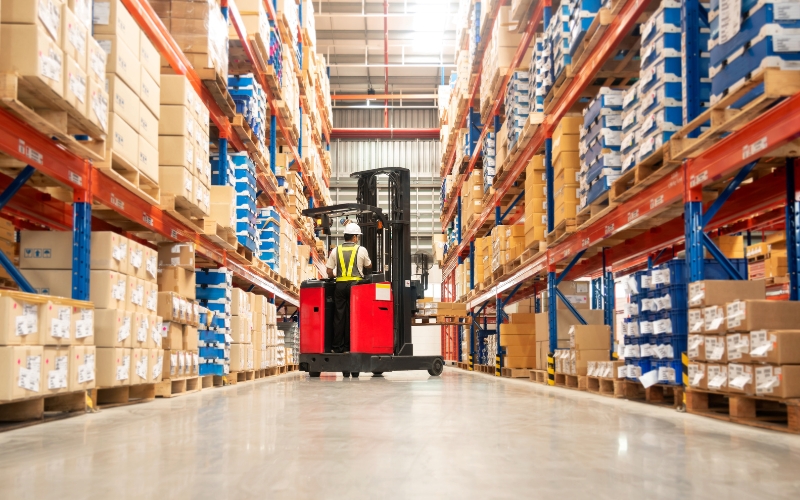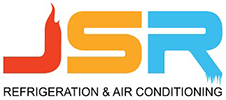How Important Is Air Conditioning In A Warehouse?

By Team JSR – Source
Warehouses are one of the key links in a business’s supply chain, allowing for easier storage, managing and distribution of stock. The need for warehouse climatisation may commonly be undermined, especially when there is no special need for refrigeration of perishable goods. However, the reality is that many non-refrigerated products have temperature requirements for storage to assure quality. Also, the health and comfort of workers should always be a priority, especially in a setting where more physically demanding tasks are performed. In this way, the role of heating, ventilation and air conditioning (HVAC) in warehouses becomes paramount.
Climate control in warehouses is thought to be very costly and power consuming, which can be true to some extent, but there are some strategies that can increase the efficiency of the HVAC system, which we will touch upon later. Also, it is important to note that investing in an effective HVAC system helps cut down cost from deterioration of products due to inadequate storage conditions.
Of course, the climatisation needs in a warehouse are not the same as those in an office setting, and storage buildings tend to have their own challenges and characteristics, so general climate control recommendations do not always apply in these situations.
Challenges of air conditioning in warehouses
As many other large buildings, warehouse pose challenges for heating and cooling, these are the specific characteristics that make them different to other commercial spaces:
- Large spaces with high ceilings. Warehouses tend to be very large spaces with tall ceilings. Vertical space serves the purpose of optimising storage by fully occupying the area without requiring extra square meters.
- Open spaces with little to no divisions/separation. Walls and separations make it easier to cool and heat certain areas, but storage buildings tend to consist of large open spaces, with few (if at all) divided areas.
- Entrances are usually open for receiving and dispatching goods. Efficient heating and cooling always calls for keeping the air-conditioned area closed to prevent treated air from escaping, but in warehouses this is a great challenge.
- Need for special equipment for perishable products. Refrigeration rooms and equipment need a cool environment to function and keep the ideal temperature of the products. But at the same time, they create higher heat emissions that can negatively affect climate control.
- Poor insulation due to construction materials. The high demand for storage facilities calls for quick and economical infrastructures; due to this reason, the use of metal and other low insulating materials is widespread.

Considerations for workers’ health and safety
As mentioned earlier, comfort and health of workers should be decisive for prioritizing the implementation of an air conditioning system. Many of the aspects specified for workplaces by ASHRAE are applicable for warehouse workers. The difference being in this case, to pay more attention to specific requirements for physical tasks, rather than office work.
- Indoor air quality (IAQ).
This term refers to the quality of elements in the environment and air we breathe inside buildings. Poor IAQ is a serious risk to the health of a building’s workers and visitors. The presence of air pollutants, such as volatile organic compounds (VOCs) and allergens, lower the IAQ. Many VOCs are gasses emitted from chemicals used in industrial solvents, paints, and dry cleaning products. Another way IAQ can be lowered is through an increase in carbon dioxide concentration and low oxygen due to high occupancy and activity in the warehouse. One of the aims of an HVAC system is to improve IAQ through ventilation and humidity control. Some warehouses may have natural ventilation, as they have an open entrance for shipments, this can help keep air flowing and reduce the concentration of harmful gasses.
Over time, with prolonged exposure to poor IAQ, health issues can arise. One of the main concerns for commercial buildings is related to Sick Building Syndrome (SBS), and its symptoms vary from headaches and lack of concentration, to cough, nausea, and increased allergy and asthma flare-ups. In the workplace, to have good IAQ means to protect the health and safety of workers.
- Temperature related complaints and thermal comfort for workers.
Heat related accidents are a great concern in physically demanding jobs. Fatigue, heat stroke and dehydration are some of the risks associated with working at high temperatures. The lack of thermal comfort can decrease focus and concentration of office workers, resulting in dips in productivity; and the effects it has on warehouse workers are just as negative. Implementing an effective air conditioning system, especially in older infrastructures, can result in great benefits, both for the comfort of workers and productivity.
OSHA establishes some guidelines to determine whether thermal stress is too high to perform certain tasks. They take into account workload, clothing and temperature to estimate if it is too hot to complete the job without risk of injury. As an example, for strenuous workload, such as movement at a high pace, climbing stairs, or heavy lifting, the temperature limit is at 25ºC (77ºF) for an average sized worker. This means that strenuous work above this threshold is unsafe and not advisable. It is important to take into account all other factors, such as the physical condition of the worker, weight, clothing, and whether the worker is acclimatized to the job or not (OSHA establishes a period of 2 weeks for this).
- Ventilation and how it helps improve IAQ
We have discussed IAQ above and mentioned that ventilation and humidity control can improve it. Through mechanical ventilation, we can control the amount or fresh air that is introduced indoors and treat it before it is breathed by workers, which is extremely important in spaces where natural ventilation is limited or not possible. The standard for ventilation is expressed as the amount of air that should be introduced per minute (expressed as CFM), and according to ASHRAE, the minimum ventilation rate for warehouses is 0.06 CFM per square foot per person. This means that the larger the building and the more occupants, the more fresh air it needs. The CFM figure helps us find out the airflow needed according to the building’s size and workers. For example, for a 7000 square feet and 30 feet tall warehouse, the result would be 420 CFM per person.
Another metric to take into account is the air changes per hour (ACH) requirement, which is calculated through a formula that converts the minutes from CFM to hours. In our case, 420 CFM with an occupancy of 100 people would be equivalent to 12 ACH. This formula can easily be adjusted using the calculator in the link above.
The lack of proper ventilation can be hazardous to workers. Without it, airborne particles remain in the same environment. With ventilation, contaminants get diluted and significantly reduce any threat to health. Also, in the case of bacteria and viruses, chances of contagion also decrease through correct ventilation.

Tips for efficient and effective warehouse air conditioning
After becoming familiar with the requirements for warehouse HVAC, we can also apply some tips to improve the effectivity of the air conditioning system:
- Optimizing insulation. Even with construction materials that transfer heat (such as metal), there are strategies to improve their insulation. There are many industry standard guides for insulation materials; in general, fiberglass is considered a good insulation material for metal buildings. Another strategy is to keep the product reception and dispatching area separate from the storage area, to prevent cooled or heated air from escaping. This can be achieved through a double entrance, and automatic sliding doors may also be useful in reducing heat transfer.
- Ceiling fans for airflow. Industrial settings can benefit from ceiling fans to ventilate in-between air exchanges. Airflow increases the sense of comfort without the need to lower the temperature, and ceiling fans help even out the temperature as hot air rises.
- Zoning. A zoned air conditioning system consists of dividing a space into various areas or zones, and providing them with their own temperature control. This way, they can be individually cooled or heated accordingly, reducing hot and cold spots. This allows for more even temperature throughout the warehouse, while taking into account each zone’s features and cooling or heating needs.
- System’s energy efficiency. We have touched on a few points on energy saving, but there are even more ways to make the warehouse’s HVAC system more efficient. Looking into AC systems that allow better control of its temperature functions can be key in energy efficiency. For example, functions that allow to reduce the AC activity in low occupancy areas, or heat recovery systems that recycle exhaust heat from cooling one area to heat another area.

Hitachi HVAC technologies for warehouses
Depending on the space that requires conditioning, Hitachi offers a wide range of HVAC solutions to fit all project needs.
For warehouse offices and meeting rooms, where there is continuous occupancy for long periods of time, the Hitachi range of VRF and Commercial systems are highly suitable, especially Heat Recovery type VRF that allows for simultaneous heating and cooling. You can read more about the benefits of Heat Recovery VRF, here.
When considering whole buildings, including warehouse storage spaces, larger HVAC systems are required, and large Commercial units or Chillers alongside VRF are ideal, especially if an air handling unit can be integrated into the system. Within the ranges offered, there are specialized systems to match the needs of all sized projects.
If Hitachi VRF systems are the ideal choice for your project, you can enhance their operation with the use of airCloud Pro, letting you monitor and control multiple and entire Hitachi VRF systems from one access point, anytime. It gives you visibility of operational status, troubleshooting, scheduling and cleaning reminders, and more.
Get Hitachi’s Air Conditioning Installation With JSR
Ask our lovely team at JSR about choosing Hitachi’s cooling system for your home. They’ll help you every step of the way & provide the right cooling system for your comfort.

